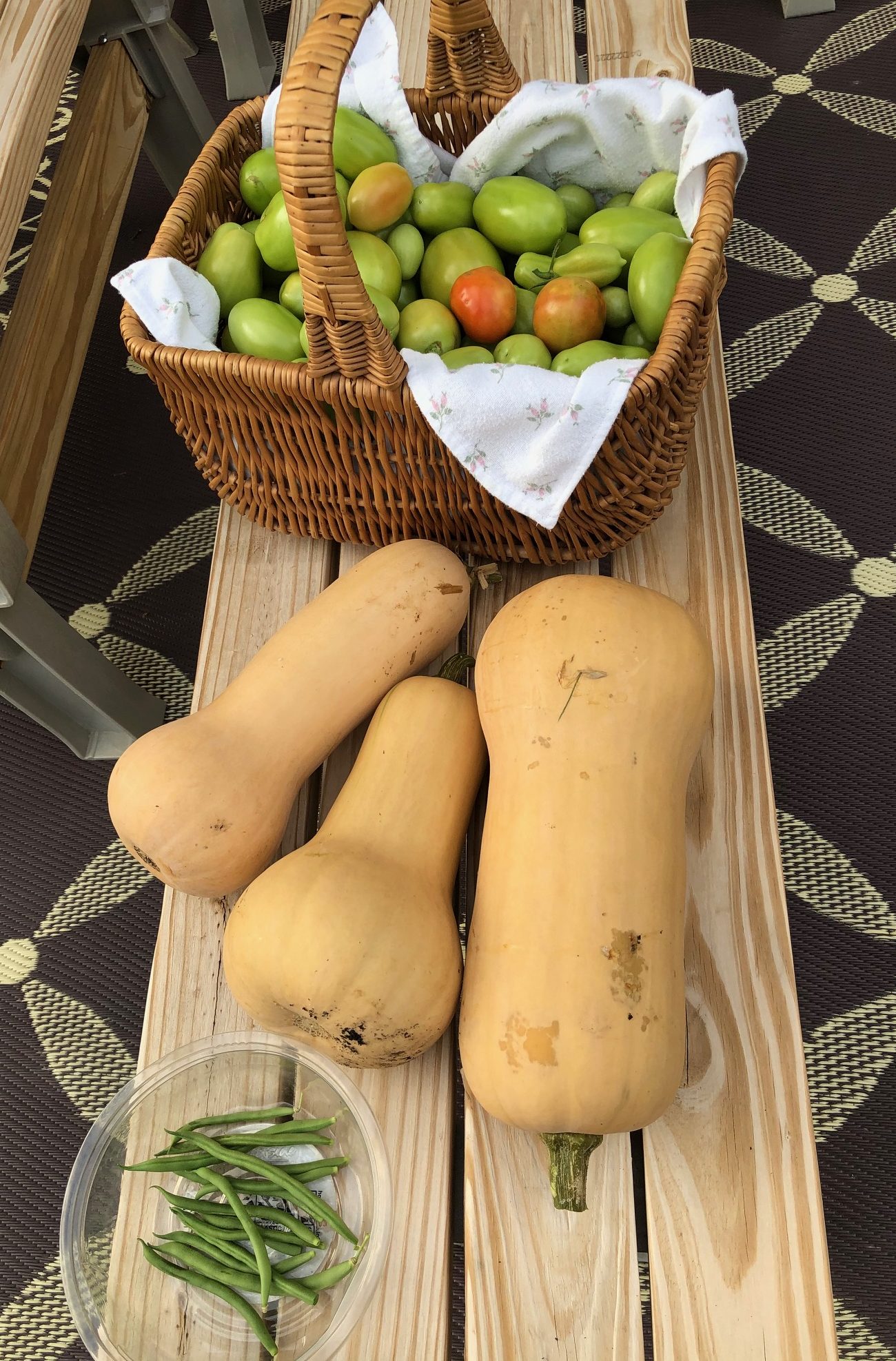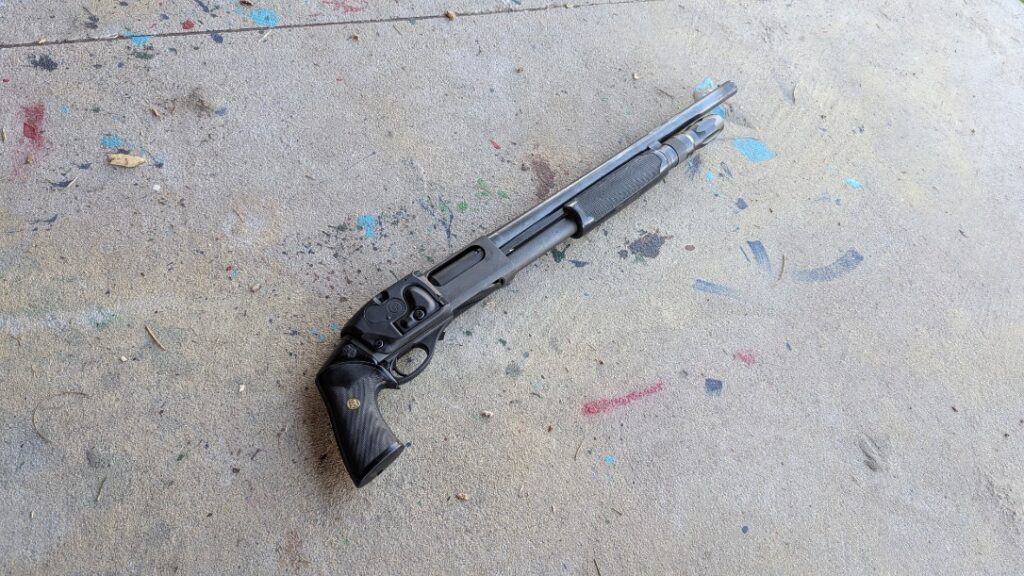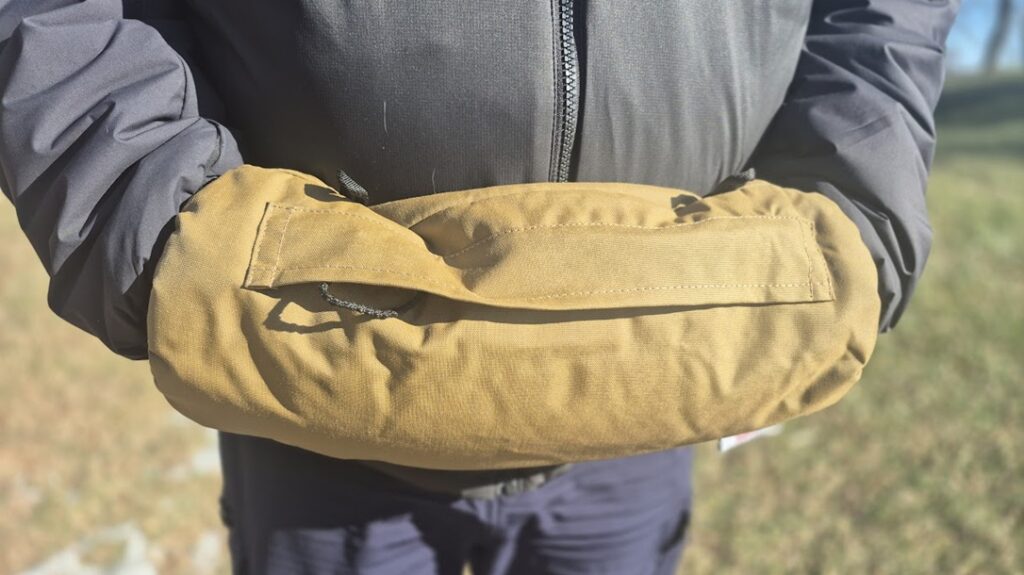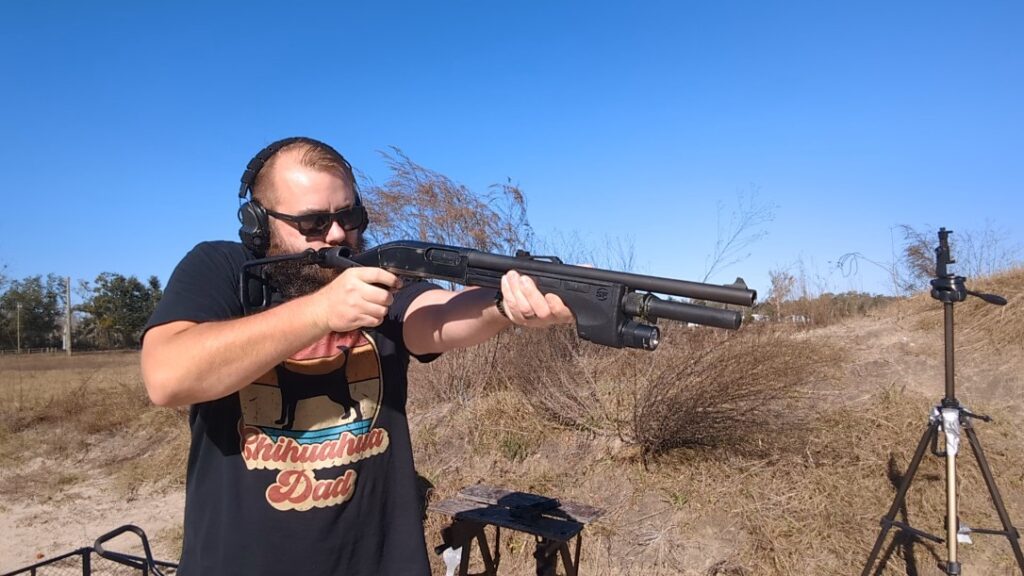Now that the gardening season is heading into the fall home stretch (at least in my growing zone), I figured I’d write an update on how things went. I was very pleased – tickled in fact – with with my yields, and it was all much less work than I had originally feared.
Cabbage
My spring container cabbage (though small heads) grew enough to can three pints of pickled cabbage/cole slaw. This is not a huge volume, but it’s more than I’ve ever grown before and it was my first attempt at growing cabbage outdoors. I admit I probably could have let the heads go longer, but I was impatient. (My lifelong character flaw) I was however very pleased with the experiment and tried planting more.
Advertisement — Continue Reading Below
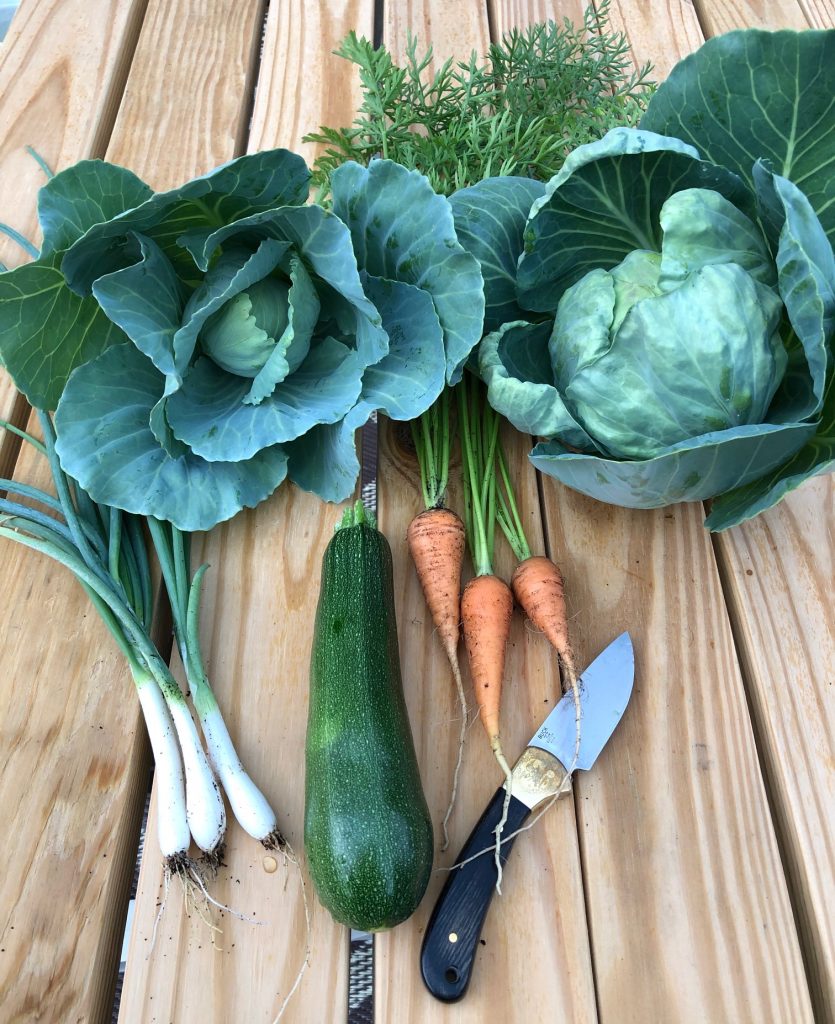
Hoping for a fall harvest, I restarted some cabbage in the window, which I transplanted outside in early August. Although they are surviving, the fall cabbage leaves are full of worm holes and didn’t do well in the late summer heat. I probably should have waited another few weeks. These are cool weather crops which are finally getting happier as the weather is moderating. Next year I will not start them until at least 2-3 weeks later in the season. This is another reason that I have a garden journal – to make notes about this stuff for next year. I’m hoping that the first frost will take care of the cabbage worms and the heads can continue on unmolested, since cabbage doesn’t mind the frost. Fingers crossed.
Carrots
Advertisement — Continue Reading Below
About mid-June I did some test-pulls of carrots from the plastic tub I started the seeds in back in March. It worked! I was so pleased! My indoor carrot efforts had been disappointing, so this container carrot victory was cause for celebration! I dehydrated several trays of these carrots for winter recipes and almost immediately started a second planting.
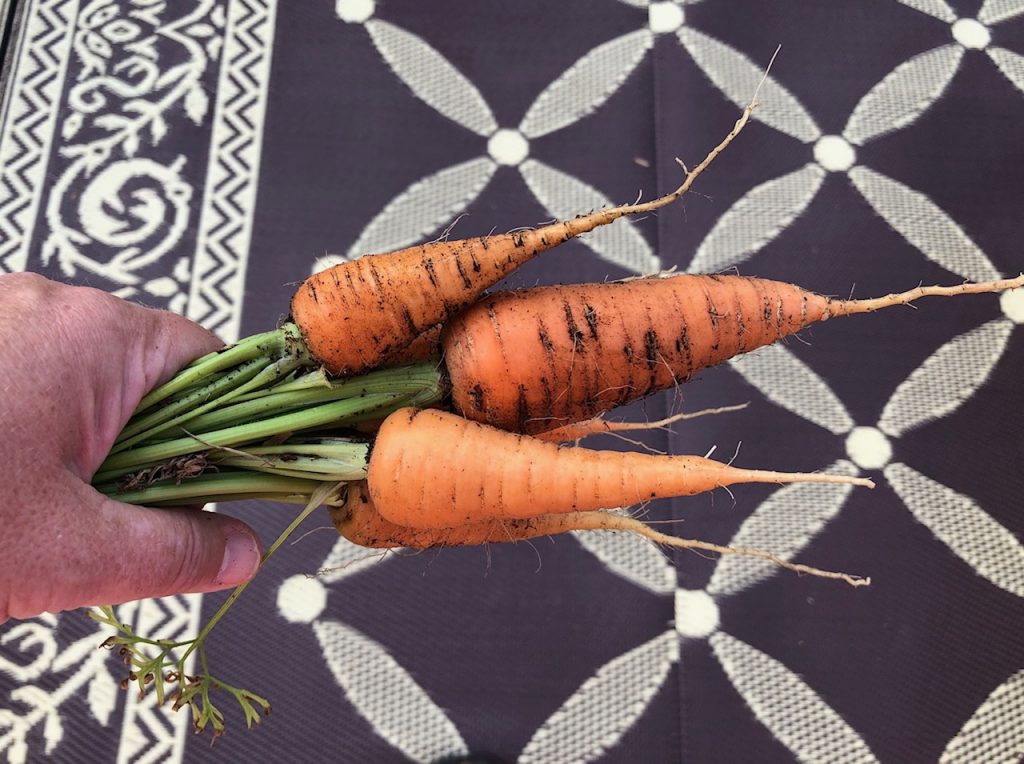
The “containers” part is important because as I have noted previously, my yard is composed of clay and shale – there is no deep soil in which to grow carrots in my ground. Tubs and raised beds are my only real option. So I plotted what to do next.
Advertisement — Continue Reading Below
For the second planting I started carrot seeds in a cardboard box wrapped in a black plastic bag. I didn’t want to buy another tub, so why not experiment? I had to be careful of the drainage and not over-water, but they did okay over all.
An additional experiment with these carrots was a trial of covering the seeds with a layer of single-ply toilet paper to keep them in place while they germinated. Carrot seeds wash around easily and can get all clumped up if you don’t do something to stabilize them. The TP worked well so I’ll be doing that every time now.
This second planting is growing well and I even decided to try a third planting in the containers where the zucchini used to be. (More on the zucchini in a bit) Remember we talked about crop rotation and succession planting previously? Carrots are reportedly light feeders and cold tolerant, so they should do okay after the Zukes without heavy recomposting. I planted mixed variety carrot seeds in those patio containers on Labor Day weekend with the toilet paper method. If we have a mild fall, I may have a carrot harvest again in late November. We shall see …
Advertisement — Continue Reading Below
Onions
Onions this year were originally just an afterthought. I bought a bag of 100 sets for a few bucks on a whim and just put them randomly in tubs wherever there was room for them as a companion planting. Gardening friends assured me that they didn’t need to be planted “just” in the spring – that I could harvest and plant pretty much whenever I wanted as long as I didn’t need huge fully mature onions for my recipes.
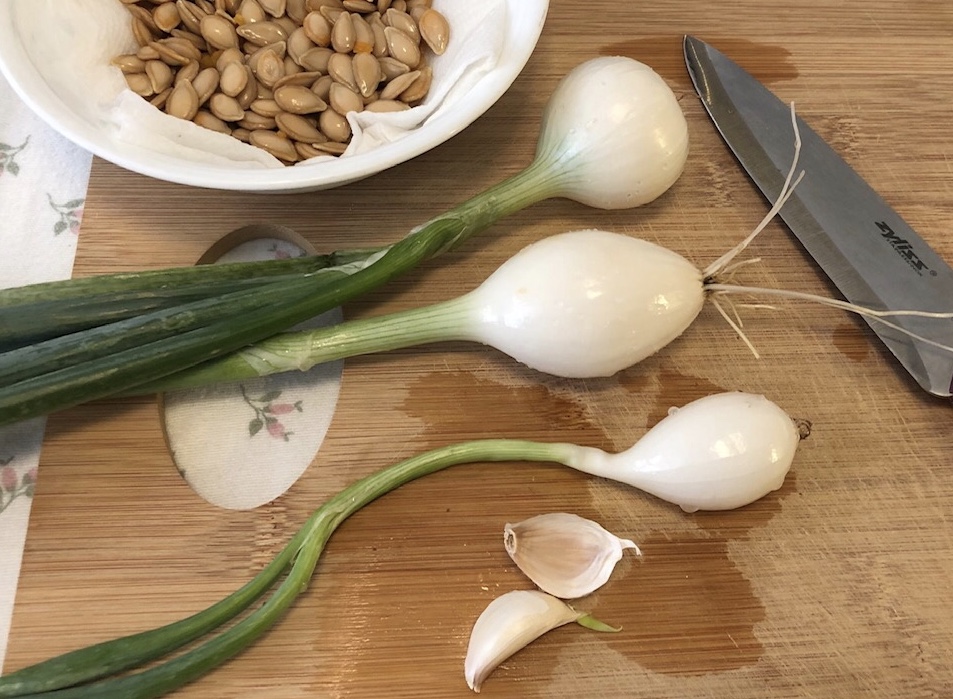
Advertisement — Continue Reading Below
This turned out to be a great decision, especially because there was a nationwide onion recall in the summer due to salmonella contamination. I pulled onions from my own tubs instead and didn’t give the recall a second thought. This is yet another argument for growing your own. Homegrown crops don’t get recalled for Hep A or Listeria or Salmonella contamination.
I’ll be planting many more onions next year now that I know how easy they are.
Three Sisters Experiment
Advertisement — Continue Reading Below
The three sisters plot went bonkers and was a great success. It honestly looked like a jungle in that raised bed during high summer. The plus to that was that there was almost no room for weeds!
This ancient form of companion planting was an interesting exercise. It provided intensive use of a smallish 4 x 6-foot space and I plan to double my efforts next year. I’ll be composting this bed aggressively over the winter to refresh the soil and will be starting a new bed as well for next year.
First Sister – Corn
Advertisement — Continue Reading Below
I got a harvest of about fifteen ears of corn from this plot. I knew there wouldn’t be a lot, but it was an experiment. We ate a few and I froze a few. It was a small plot so I did a good bit of hand pollinating to ensure a yield. What was interesting is that this corn was a multicolored variety, but it didn’t start turning colors until the kernels were quite mature. I have no idea how that works. I’ll have to read more about it this winter.
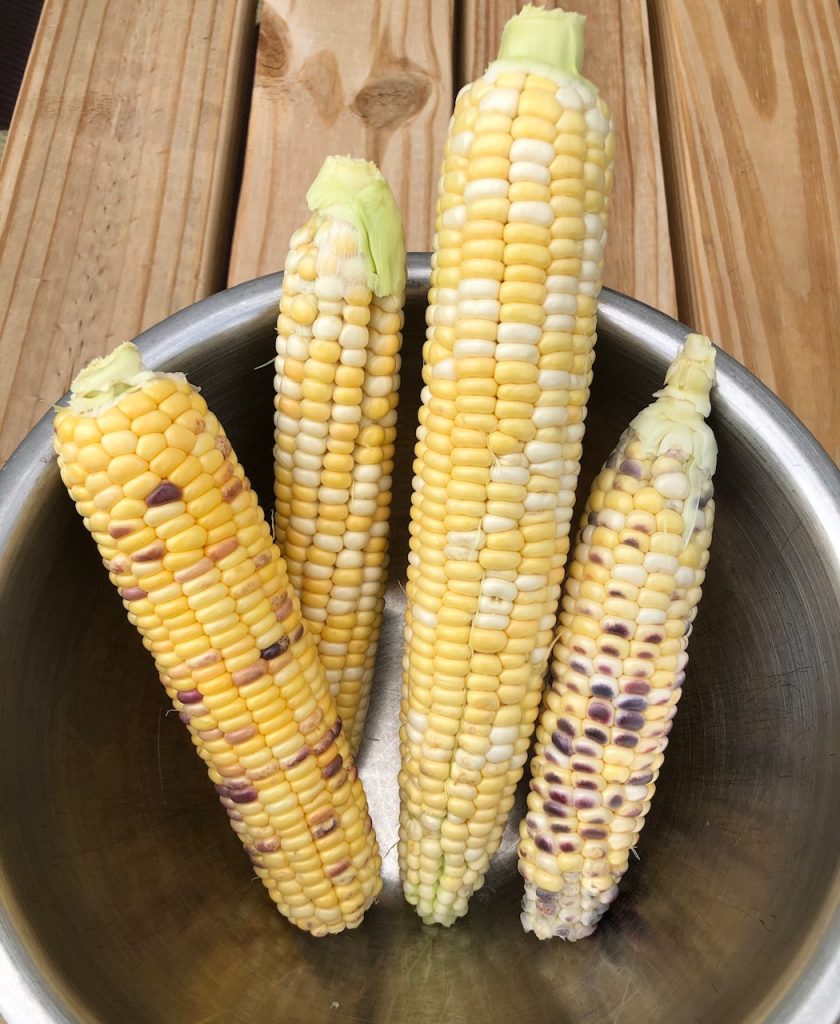
Next year I definitely want at least one more raised bed with a second planting of corn about two weeks after the first. It was an interesting learning experience and I want to try for more. Maybe next year I’ll try an early variety in one bed and a late variety in the other so they don’t cross-pollinate.
Advertisement — Continue Reading Below
Second Sister – Green beans
The second sister – Blue Lake stringless pole green beans – have been wildly successful. They are slowing down now that it’s October, but I am still harvesting by the handful almost daily. We are eating some, and I am dehydrating some and freezing others and they aren’t done yet. They grew well on the string trellis as well as climbing the corn. This is another keeper for next year.

These beans were really a “cover the seed and walk away” kind of deal. There was almost no work involved, so it should not be a huge burden to double my planting next year – or maybe I’ll try some shell beans (maybe black beans?) in the other plot. But the bottom line is, I was happy – I ended with at least twelve quarts of green beans over the season – the bees were happy, and even the hummingbirds came to sip at the blossoms, so what’s not to like?
Third Sister – Squash
The third sister – butternut squash – has just finished. I ended up with seven squash scattered around the periphery of the raised bed, one of which was huge by butternut standards. That one didn’t look like it would keep well, so it was the first in the pot for squash soup last weekend. I am just tickled with how well this turned out and how easy it was. The bees were equally ecstatic over the bright orange blossoms, and I was delighted to keep those pollinators happy. Butternuts reportedly keep well in a cool dry place for up to six months, so these will be going on the basement racks for winter safe-keeping.
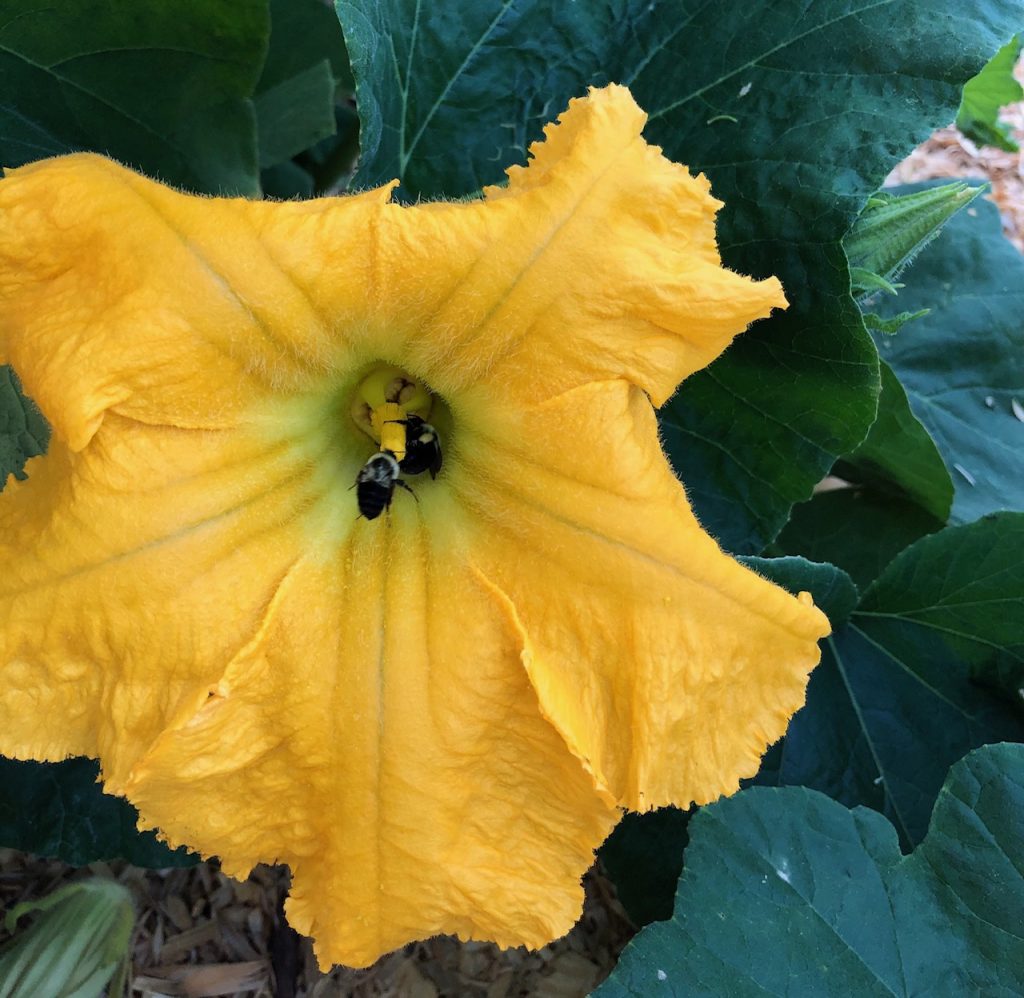
Tomatoes
Roma tomatoes grown in plastic storage tubs were quite a success in my Pandemic Garden. There was a frost warning a few days ago, so I pulled off all of the rest of my green tomatoes to put an end to the season. They are now ripening in cardboard boxes in the kitchen.
I ended up with close to 30 pounds worth of these beauties for the season. That might not sound like a lot to you, but for eight plants in four tubs, this method produced plenty enough for this small household. Especially considering the deer damage early in the season. I am very pleased.
I froze most of my harvest as I picked it in anticipation of making and canning pasta sauce on an upcoming long weekend, so my work here is not yet done. The green ones that don’t ripen will end up as green tomato salsa verde!
Jalapeños
Although I’m not a huge hot pepper fan I did want to grow just a couple plants for berry pepper jelly etc. Due to unplanned circumstances I ended up with SIX plants surviving instead! That’s a lot more hot peppers than I knew what to do with!
After I had what peppers I needed frozen and dehydrated, I gave some away to friends. Then I mailed some dehydrated ones to my son. Then I brought three separate bags-full to my office staff, and finally gave some away to the neighbors. Whew!
These plants were prolific to say the least. They thrived in the patio containers I planted them in. But next year I only want TWO plants. The rest of the space I want to fill with green chilies, and colorful sweet peppers instead. That’s the plan at least. We’ll see how that goes.
Zucchini
Just like last year I got a great yield from my container zucchini plants. We ate some, I dehydrated a bunch for the winter, made zucchini-ranch chips with some, and made zucchini bread for the freezer with still more.
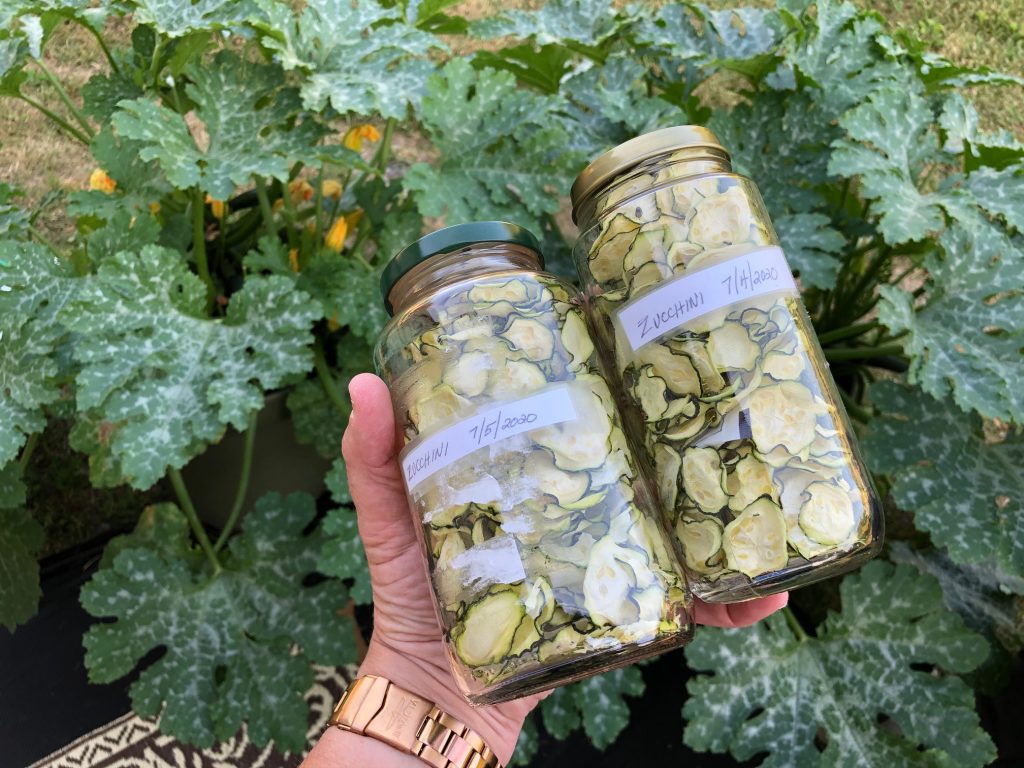
The difference from last year is that I had an infestation of squash bugs this year – Yuck. I picked off as many as I could find and tossed them in a can of soapy water. I also trimmed off the parts of the leaves with egg masses on and burned them (Die, foul pestilence!).
But the critters eventually got ahead of me and I had to resort to insecticidal soap. I still had a good yield of zucchini, but next year I may treat with the soap spray prophylactically to keep them from getting ahead of me again. After the last two zukes came off, I pulled up the plants and burned them to get rid of the last of the squash bugs and keep them away from the butternuts in the raised bed.
Pests
In addition to previously mentioned squash bugs, I had a few more pests to deal with, the biggest of which were the deer.
After a hopeful first month or two with the low mesh fencing that I threw together in May, the deer started getting wise and pressing against and bending over the somewhat stretchy fencing to get at my bush beans and tomatoes.
As much as I wanted to do all this gardening on the cheap, I ended up spending 300 dollars on additional fencing, plus some solar motion detecting spotlights. I didn’t think the HOA (let alone the game commission) would approve of motion activated mini-guns though.
I tried not to think about how much produce I could have just purchased for that money. But I consoled myself with the thought that this was a long term investment, that the fencing should hold up for several years and so my costs would be spread out over time. Plus with the lights there was the home security angle against two-legged incursions to think about too. The fencing actually worked well so that was a relief. I didn’t want all my blood, sweat, and tears to end up as nothing but deer poop in the grass.
The lights were less effective though. The other morning I woke up thinking it was dawn – but it was really just the motion lights shining through my window. I looked out, and sure enough, there were the four-hooved intruders. They were so bold that the lights didn’t bother them. It took me yelling out the window at them before they dispersed. (Why, oh why am I not allowed to use my crossbow???) But at least the fence did its job and kept them away from my food crops. The bird feeder however, was another matter.
Remember the hornworms? Well, I never did find any more of them (thank goodness), but they didn’t survive the bug house either. There was a big swarm of ants near the bug house a few days after that post and I think the ants ate the hornworms. Oh well. At least I didn’t have an actual infestation -it was just the two of them.
Additional garden pests I dealt with through the summer included ants, stink bugs, and cabbage worms. But there were also helpful predators as well. Due to my bird feeder in the vicinity, there were plenty of winged bug-eaters on hand to pick through the garden, and also a praying mantis on patrol. I did not have to resort to pesticides in the main garden thank goodness. Nature took care of most of the problem for me.
So that’s the story. My 2020 Pandemic Garden was a tremendous success and I’m very proud of myself for being such a novice outdoor gardener. It was a great experiment and learning experience. Building and tending this garden gave me many hours of enjoyment in addition to filling my belly and training me for the REAL APOCALYPSE tm. Through the course of these last several months I started thinking of my little garden as a friend, so I penned these few corny lines.
At first you were just a fantasy – a vision in my head of what I wanted. But suddenly there you were – you were real. I poured my blood, sweat, and tears into you – supporting, encouraging, and tending to you. In return you nourished me and gave me hope in time of great frustration and despair. So many hours we spent together. So many moments that you gave me peace.
But the time has come to say goodbye. They say some relationships are only for a season, and that is true of this one. I have to cut you off now – for your own good. You need time to recover your strength. But I will always remember the times we had together, and I’ll remember what you taught me. I am a better person for having had you in my life.
Sleep well, little garden patch. I’ll see you in the Spring.
